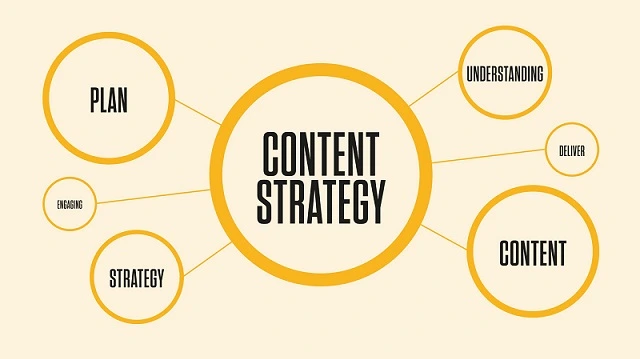1. Choose Your Niche

Selecting the right niche is not only about your passion and expertise but also about understanding your target audience. Research the demand for your chosen niche to ensure there is an audience interested in the topics you plan to cover. Tools like Google Trends and keyword research tools can help you gauge interest.
- Select a niche you are passionate about and have expertise in.
- Research niche trends and demand to ensure there’s an audience.
- Consider your competition and identify what makes your website unique.
- Think long-term and choose a niche with room for growth.
2. Market Research

Dive deep into market research to understand your audience’s needs. Identify their pain points, questions, and problems that your tutorials can address. Analyze your competitors’ websites to see what’s working for them and what gaps you can fill.
- Define your target audience: demographics, interests, and pain points.
- Analyze your competitors’ websites and content.
- Use keyword research tools to identify relevant keywords and topics.
- Stay updated with industry news and emerging trends.
3. Domain Name and Hosting

Your domain name is your online identity. Choose one that reflects your niche and is easy to remember. Consider a top-level domain (TLD) like .com for professionalism. When it comes to hosting, reliability is crucial. Look for hosting providers that offer good uptime, responsive customer support, and scalability options as your website grows.
- Choose a domain name that reflects your niche and is easy to remember.
- Opt for a reliable hosting provider with good customer support.
- Ensure your website loads quickly and is secure (consider using SSL).
When you have a limited budget for website creation from scratch, consider utilizing a website builder. Website builders offer cost-effective solutions for those who may not have the resources for custom web development. They provide pre-designed templates, user-friendly interfaces, and hosting services, all bundled into one package. This approach not only saves you money but also simplifies the website setup process, allowing you to focus on creating valuable tutorial content.
4. Content Strategy

Creating a content calendar helps you maintain consistency. It also allows you to plan your content to coincide with seasonal trends or events in your niche. LSI keywords (Latent Semantic Indexing) are related keywords that can help improve your SEO. Integrating them naturally into your content can boost your search engine rankings.
- Create a content calendar with a consistent posting schedule.
- Plan a variety of tutorial types and formats (text, video, images).
- Incorporate LSI (Latent Semantic Indexing) keywords naturally into your content.
- Research and brainstorm topics that resonate with your audience.
5. User-Friendly Design

A user-friendly website design is essential for retaining visitors. Ensure that your website is responsive and mobile-friendly. Navigation should be intuitive, with clear menus and categories. Optimizing images and other media files for fast loading is crucial for user experience.
- Select a responsive and user-friendly website theme.
- Make navigation intuitive with clear menus and categories.
- Optimize for mobile devices to reach a broader audience.
- Ensure fast loading times by compressing images and using caching.
6. Monetization Options

While exploring monetization options, consider your audience’s preferences. Affiliate marketing involves promoting products or services related to your niche and earning a commission on sales. Display ads can generate revenue, but it’s essential to strike a balance to prevent overwhelming your audience. Selling premium content, like in-depth courses or ebooks, can provide substantial income. Membership plans offer exclusive benefits to subscribers and can create a steady income stream.
- Explore various monetization methods like affiliate marketing, ads, and selling products.
- Diversify income sources to reduce dependency on one revenue stream.
- Choose monetization methods that align with your audience and content.
Creating Engaging Tutorials
1. Quality Content
High-quality content sets your website apart. Research thoroughly, cite sources, and fact-check to ensure accuracy. Update your tutorials regularly to keep them current and maintain your website’s credibility.
- Research thoroughly before creating content.
- Provide well-structured, informative, and accurate tutorials.
- Keep your content up-to-date to maintain relevance.
- Solve real problems and address your audience’s pain points.
2. Multimedia Elements
Visual elements like images, videos, and infographics make your tutorials more engaging. They can help simplify complex topics and enhance understanding. Make sure your media files are optimized for fast loading to improve user experience.
- Use images, videos, and infographics to illustrate concepts.
- Ensure media files are optimized for fast loading.
- Add captions and alt text to enhance accessibility.
- Embed relevant multimedia seamlessly into your tutorials.
3. Interactivity
Building a sense of community around your website is vital. Encourage audience interaction through comments and forums. Respond promptly to comments to foster engagement. You can also host live webinars, Q&A sessions, or quizzes to create a more interactive experience.
- Encourage audience engagement through comments and discussions.
- Host webinars, live Q&A sessions, or interactive quizzes.
- Build a community by responding to comments and fostering interaction.
- Create a forum or discussion board for your website.
4. Clear Instructions
When creating tutorials, remember that your audience may include beginners. Provide step-by-step instructions with clear, concise language. Use real-life examples to illustrate your points. Continuously improve your tutorials based on user feedback to make them even more effective.
- Use step-by-step instructions with clear and concise language.
- Include visuals to clarify complex processes.
- Test your tutorials with beginners to ensure they are easy to follow.
- Continuously improve instructions based on user feedback.
Driving Traffic To Your Website

1. SEO Optimization
Effective SEO involves keyword research, on-page optimization, and building quality backlinks. Keyword research tools like SEMrush and Ahrefs can help identify valuable keywords. Optimize your titles, meta descriptions, and headings with relevant keywords. Monitor your website’s SEO performance and make adjustments as needed.
- Conduct keyword research to identify high-ranking keywords.
- Optimize on-page SEO elements, including titles, meta descriptions, and headings.
- Build quality backlinks from reputable websites in your niche.
- Monitor your website’s SEO performance regularly.
2. Social Media Promotion
Building a strong social media presence is a powerful way to drive traffic. Share your tutorials on platforms like Facebook, Twitter, Instagram, and Pinterest, depending on your niche. Engage with your audience, respond to comments, and use relevant hashtags to increase visibility.
- Establish a presence on social media platforms relevant to your niche.
- Share your tutorials, engage with your audience, and create a community.
- Use hashtags and trends to expand your reach.
- Collaborate with influencers or complementary brands.
3. Email Marketing
Building an email list allows you to reach your audience directly. Send regular newsletters with valuable content and updates. Personalize your emails based on the interests and behavior of your subscribers. Track email performance to refine your strategies and improve engagement.
- Build an email list to keep your audience informed about new content.
- Send regular newsletters with valuable insights, tutorials, and updates.
- Personalize email campaigns to cater to different audience segments.
- Use email analytics to refine your strategies.
4. Networking
Networking can significantly expand your reach. Collaborate with influencers or websites in your niche by guest posting or participating in joint projects. Attend virtual events, webinars, or conferences to connect with industry professionals. These connections can lead to valuable partnerships and opportunities.
- Collaborate with influencers or other websites in your niche.
- Write guest posts for industry-related blogs and include backlinks.
- Attend virtual events, webinars, or conferences to network.
- Form partnerships for cross-promotion and audience expansion.
Monetizing Your Tutorial Website
1. Affiliate Marketing
Affiliate marketing involves promoting products or services related to your niche. Sign up for relevant affiliate programs and use unique tracking links in your content. Be transparent about your affiliations and disclose them to your audience. Track your affiliate marketing performance to identify top-performing products and optimize your strategy.
- Identify products or services relevant to your niche.
- Sign up for affiliate programs and obtain unique tracking links.
- Promote affiliate products in your content and disclose your affiliations.
- Track conversions and optimize your affiliate marketing strategy.
2. Advertisements
Displaying ads on your website can generate income through ad networks like Google AdSense. Ensure that ads are strategically placed and do not disrupt the user experience. Experiment with different ad formats to find what works best for your audience.
- Join ad networks like Google AdSense.
- Strategically place ads on your website without disrupting user experience.
- Experiment with ad formats (display, native, video) to maximize revenue.
- Monitor ad performance and adjust ad placements as needed.
3. Premium Content
Creating premium tutorials or courses can provide a significant source of income. Offer exclusive, in-depth content that goes beyond what’s available for free. Promote premium content through your website and email marketing to attract dedicated subscribers.
- Develop high-quality premium tutorials or courses.
- Offer exclusive content to paying subscribers.
- Promote premium content through your website and email marketing.
- Provide additional value to premium members with perks.
4. Membership Plans
Membership plans can create a steady stream of income while providing additional benefits to your most dedicated audience. Develop tiered membership plans with varying perks, such as early access to tutorials, personalized support, or exclusive resources. Set competitive pricing based on the value you offer.
- Create membership tiers with varying benefits.
- Offer exclusive access to certain tutorials, resources, or community features.
- Set competitive pricing based on the value you provide.
- Continuously engage and support your members to retain them.
Diversifying Your Monetization Strategies
1. Sponsored Content
Sponsored content involves collaborating with brands or companies to create tutorials or articles related to their products or services. These collaborations can provide a substantial income source. Ensure that sponsored content aligns with your niche and is genuinely valuable to your audience.
2. Online Courses and Webinars
Beyond premium content, consider offering comprehensive online courses or webinars. These can provide an in-depth learning experience for your audience. Platforms like Teachable and Udemy make it easy to create and sell courses. Promote them through your website and email marketing.
3. E-commerce and Merchandise
If your niche allows, consider selling physical or digital products related to your tutorials. This could include merchandise like branded apparel, ebooks, or tools and resources that complement your content. E-commerce integration can be achieved through platforms like Shopify or WooCommerce.
Analyzing And Optimizing Your Revenue Streams
1. Track Your Analytics
Use web analytics tools like Google Analytics to monitor your website’s performance. Track metrics like traffic, user behavior, and conversion rates. This data will help you identify which strategies and content types are most effective in generating income.
2. A/B Testing
Experiment with different monetization strategies, ad placements, and content formats through A/B testing. This involves presenting two variations to your audience and analyzing which one performs better. Over time, you can optimize for higher revenue.
Legal And Tax Considerations
1. Copyright and Licensing
Be aware of copyright laws when using images, videos, or other media in your tutorials. Always provide proper attribution or obtain the necessary licenses. Consider using royalty-free resources to avoid legal issues.
2. Affiliate Disclosures
It’s essential to disclose your affiliate relationships transparently to your audience. Comply with the Federal Trade Commission (FTC) guidelines by including clear and conspicuous disclosures in your content.
3. Tax Obligations
As your income grows, you may have tax obligations. Keep records of your earnings and expenses related to your website. Consult with a tax professional to ensure compliance with tax laws in your area.
Building And Nurturing Your Community
1. Engage with Your Audience
Actively engage with your audience through comments, social media, and email. Respond to questions, address concerns, and create a welcoming and interactive environment. Building a loyal and engaged community can lead to more significant word-of-mouth referrals and support for your monetization efforts.
2. Feedback and Adaptation
Continuously seek feedback from your audience. Use surveys, comments, and analytics to understand their preferences and needs. Adapt your content and monetization strategies based on this feedback to ensure they remain relevant and valuable.
Scaling Your Tutorial Website
1. Outsourcing and Delegation
As your website grows, consider outsourcing tasks such as content creation, SEO, and website maintenance. Delegating these responsibilities allows you to focus on strategy and growth.
2. Scaling Content Production
To attract a broader audience and generate more income, increase your content production. Consider hiring writers, videographers, or designers to create high-quality tutorials more efficiently.
Conclusion
Creating a tutorial website and making money from it is a dynamic and evolving process. It requires dedication, continuous learning, and adaptability. By following the comprehensive strategies and tips outlined in this article, you’ll be well on your way to building a successful online platform that not only shares valuable knowledge but also generates a sustainable income stream.
Remember, success in this endeavor takes time and persistence. Keep refining your techniques, staying updated with industry trends, and nurturing your online community. With the right strategies and a passion for your niche, your tutorial website can become a profitable and fulfilling venture.











